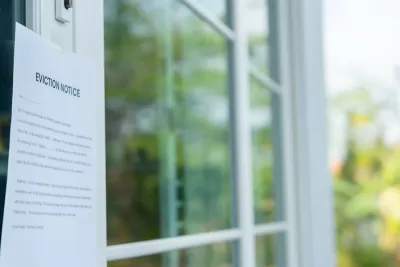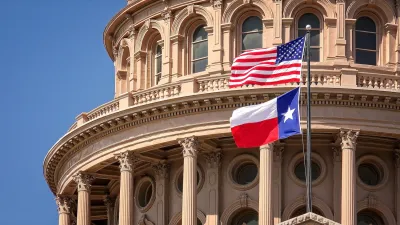Ordinances that allow landlords to evict tenants for nuisance complaints or alleged criminal activity may run afoul of federal protections, the DOJ warns.

The United States Department of Justice is warning cities that ordinances that allow landlords to evict tenants for ‘nuisance’ complaints may be federally illegal, reports Gabriel Hathaway in the Winona Post. “These ordinances can lead to renters being evicted due to minor nuisance violations and other offenses,” Hathaway explains.
“While ‘crime-free’ or ‘nuisance’ rental housing programs have different features, the DOJ letter notes they may encourage or require landlords to evict or punish tenants for alleged criminal activity, reject housing applicants because of a criminal history or past calls for emergency or law enforcement assistance, or designate medical or disability-related calls for service as a ‘nuisance,’ among other things.” According to the DOJ, “These features of ‘crime-free’ or ‘nuisance’ programs may violate federal statutes such as The Fair Housing Act (FHA), title VI of the Civil Rights Act of 1964, The Americans with Disabilities Act (ADA), and The Violence Against Women Act.”
In a letter, DOJ Civil Rights Division Assistant Attorney General Kristen Clarke wrote, “The [DOJ] is charged with promoting fair access to housing and vigorously enforces federal laws aimed at achieving that goal. We encourage law enforcement agencies and local governments to assess their programs referred to as ‘crime”-free’ or ‘nuisance’ programs to determine whether they comply with the federal statutes discussed in this letter.”
FULL STORY: Feds: City rules evicting tenants over nuisances may be illegal

Montreal Mall to Become 6,000 Housing Units
Place Versailles will be transformed into a mixed-use complex over the next 25 years.

Planetizen Federal Action Tracker
A weekly monitor of how Trump’s orders and actions are impacting planners and planning in America.

DARTSpace Platform Streamlines Dallas TOD Application Process
The Dallas transit agency hopes a shorter permitting timeline will boost transit-oriented development around rail stations.

Study: 4% of Truckers Lack a Valid Commercial License
Over 56% of inspected trucks had other violations.

Chicago Judge Orders Thousands of Accessible Ped Signals
Only 3% of the city's crossing signals are currently accessible to blind pedestrians.

Philadelphia Swaps Car Lanes for Bikeways in Unanimous Vote
The project will transform one of the handful of streets responsible for 80% of the city’s major crashes.
Urban Design for Planners 1: Software Tools
This six-course series explores essential urban design concepts using open source software and equips planners with the tools they need to participate fully in the urban design process.
Planning for Universal Design
Learn the tools for implementing Universal Design in planning regulations.
City of Mt Shasta
City of Camden Redevelopment Agency
City of Astoria
Transportation Research & Education Center (TREC) at Portland State University
US High Speed Rail Association
City of Camden Redevelopment Agency
Municipality of Princeton (NJ)





























